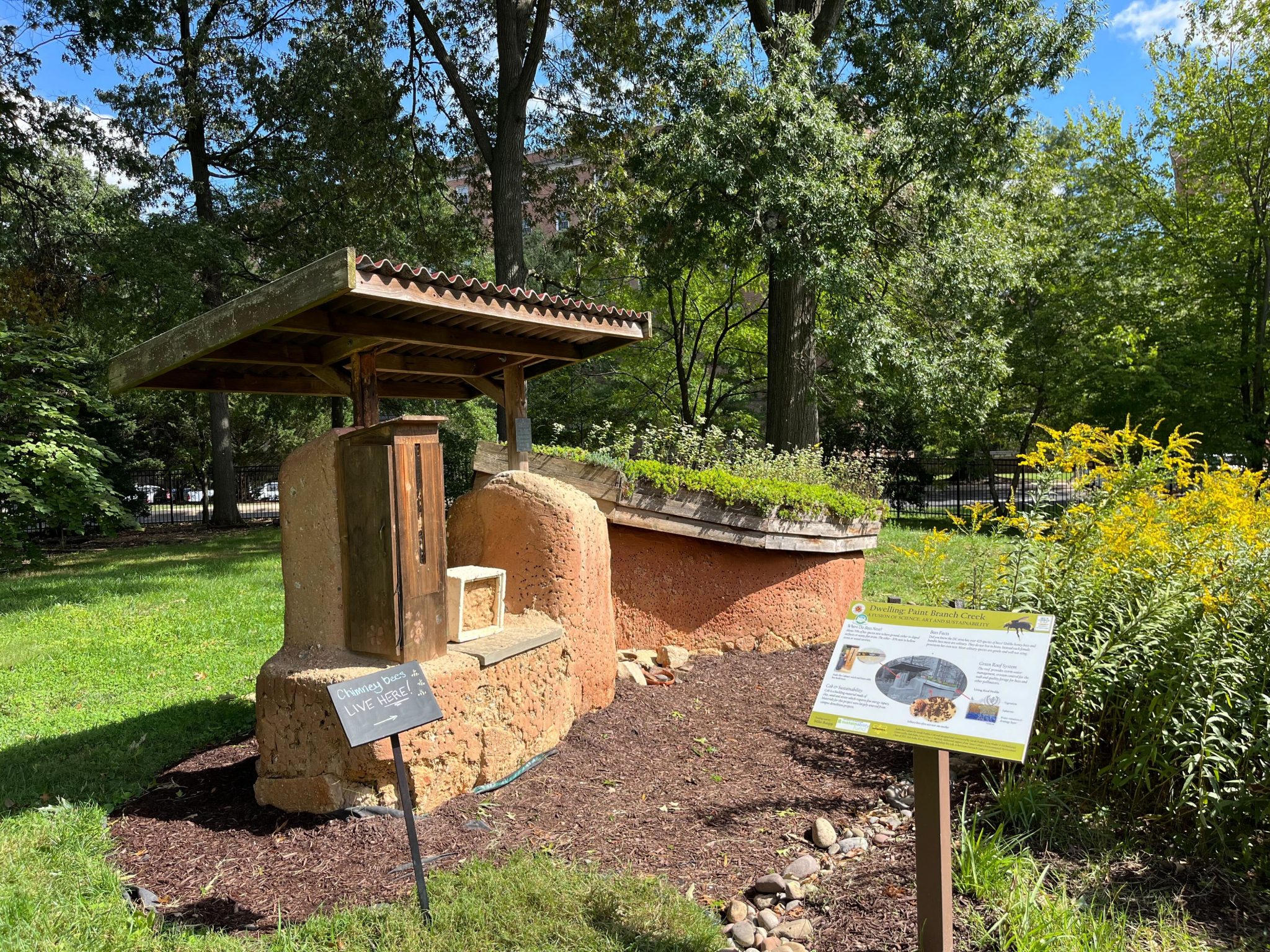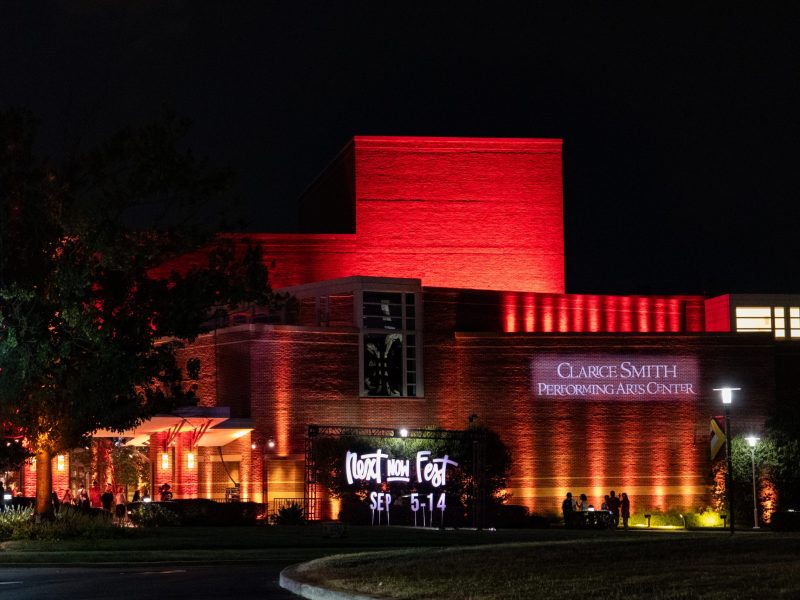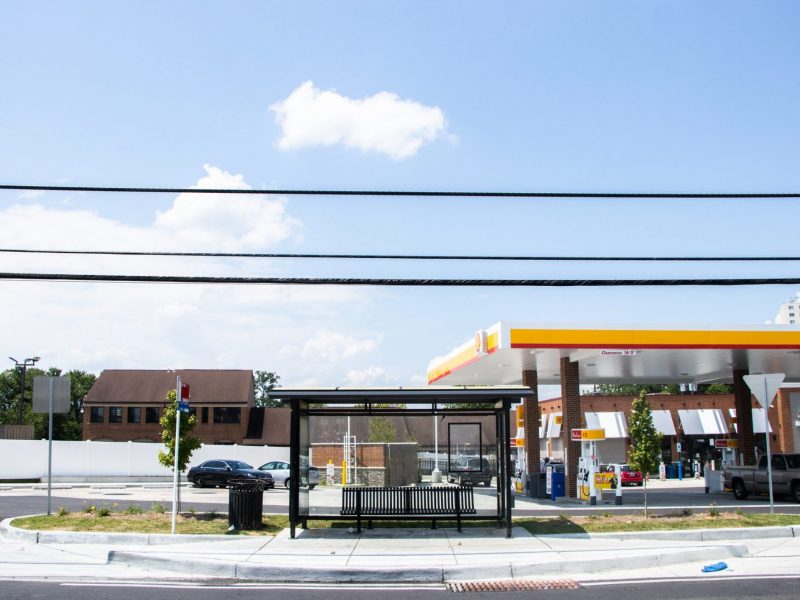Students and faculty met outside the Arboretum Outreach Center on Wednesday to discuss how the University of Maryland is helping bees pollinate the campus and creating a sustainable habitat for native pollinators.
The event highlighted the importance of supporting native bee species on campus and showcased the pollinator garden adjacent to a bee wall called “Dwelling: Paint Branch Creek.”
Lindsay Barranco, the experiential learning coordinator in the university’s Institute of Applied Agriculture, wanted to organize the meetup so students could learn about the Arboretum Outreach Center and get introduced to the university’s various pollinator garden projects.
“It’s a nice time of year to sort of see the flowering blossoms, and to see the bee wall, and to learn about the native bees that are living within and developing within the bee wall,” Barranco said.
[Doja Cat’s new album ‘Scarlet’ fails to top the controversy surrounding it]
Graduate students originally built the bee wall, a cob wall built of clay, straw and sand, in 2015. The wall also includes a cabinet designed by a graduate student, which was added afterward to accommodate chimney bees. The installation later joined the pollinator garden, which was built in 2016.
“I thought it [would] be a great opportunity to know more about the flowers, and the pollinators and the [people] … who built it,” said Afomia Amde Admasu, a junior architecture major.
Admasu attended the event as a part of a site analysis for one of her classes called “Pollinators in Crisis.” The course breaks down the role of pollinators in complex ecosystems, as well as the interactions between humans and nature.
Barranco offered brochures and wildflower seed packets to attendees, encouraging them to take self-guided tours across the many campus gardens and to observe the native plant species that make up these gardens.
Aside from the pollinator garden outside the Arboretum, there are many other gardens across campus, including at the Edward St. John Learning and Teaching Center, Knight Hall and Annapolis Hall. Barranco hopes to incorporate more gardens on campus to ensure accessibility for pollinators.
[‘Crying in H Mart’ author Michelle Zauner speaks at SEE Event]
This commitment is part of a sustainability project called Bee Campus USA, which pledges to create and maintain pollinator habitats on college campuses and other communities by providing favorable conditions for native pollinators to thrive.
The university was named a Bee Campus USA affiliate of the Xerces Society in April. Along with increasing biodiversity on campus with garden projects, the university committed to reducing the use of pesticides and providing education about pollinator conservation.
A key part of the initiative is service learning. Michael Ellis, the coordinator for Bee Campus UMD and a horticulturist and environmental science and policy alum of this university, said he hopes to employ students in conservation efforts.
The Bee Campus UMD team works with various university departments, such as the entomology department, the sustainability office and the agricultural and natural resources college, to maintain this university’s landscape and make it pollinator-friendly.
“It’s wonderful to be engaged in so many different departments on campus and to have, kind of, this coalition of students, and departments, and faculty and staff,” Ellis said. “It’s been a great trajectory and positive momentum for sustainability on campus.”



